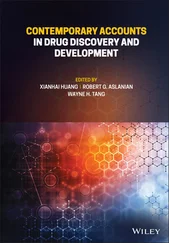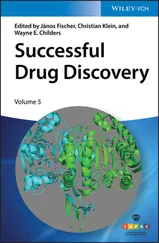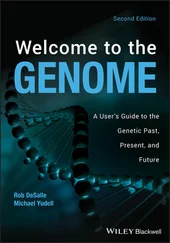Genome Editing in Drug Discovery
Здесь есть возможность читать онлайн «Genome Editing in Drug Discovery» — ознакомительный отрывок электронной книги совершенно бесплатно, а после прочтения отрывка купить полную версию. В некоторых случаях можно слушать аудио, скачать через торрент в формате fb2 и присутствует краткое содержание. Жанр: unrecognised, на английском языке. Описание произведения, (предисловие) а так же отзывы посетителей доступны на портале библиотеки ЛибКат.
- Название:Genome Editing in Drug Discovery
- Автор:
- Жанр:
- Год:неизвестен
- ISBN:нет данных
- Рейтинг книги:5 / 5. Голосов: 1
-
Избранное:Добавить в избранное
- Отзывы:
-
Ваша оценка:
- 100
- 1
- 2
- 3
- 4
- 5
Genome Editing in Drug Discovery: краткое содержание, описание и аннотация
Предлагаем к чтению аннотацию, описание, краткое содержание или предисловие (зависит от того, что написал сам автор книги «Genome Editing in Drug Discovery»). Если вы не нашли необходимую информацию о книге — напишите в комментариях, мы постараемся отыскать её.
A practical guide for researchers and professionals applying genome editing techniques to drug discovery Genome Editing in Drug Discovery,
Genome Editing in Drug Discovery
Genome Editing in Drug Discovery
Genome Editing in Drug Discovery — читать онлайн ознакомительный отрывок
Ниже представлен текст книги, разбитый по страницам. Система сохранения места последней прочитанной страницы, позволяет с удобством читать онлайн бесплатно книгу «Genome Editing in Drug Discovery», без необходимости каждый раз заново искать на чём Вы остановились. Поставьте закладку, и сможете в любой момент перейти на страницу, на которой закончили чтение.
Интервал:
Закладка:
29 Jiang, W., Bikard, D., Cox, D. et al. (2013). RNA‐guided editing of bacterial genomes using CRISPR‐Cas systems. Nat. Biotechnol. 31: 233–239.
30 Jiang, W., Zhao, X., Gabrieli, T. et al. (2015). Cas9‐assisted targeting of CHromosome segments CATCH enables one‐step targeted cloning of large gene clusters. Nat. Commun. 6: 8101.
31 Kim, Y.G., Cha, J., and Chandrasegaran, S. (1996). Hybrid restriction enzymes: zinc finger fusions to Fok I cleavage domain. Proc. Natl. Acad. Sci. U. S. A. 93: 1156–1160.
32 Kim, H.J., Lee, H.J., Kim, H. et al. (2009). Targeted genome editing in human cells with zinc finger nucleases constructed via modular assembly. Genome Res. 19: 1279–1288.
33 Klompe, S.E., Vo, P.L.H., Halpin‐Healy, T.S., and Sternberg, S.H. (2019). Transposon‐encoded CRISPR‐Cas systems direct RNA‐guided DNA integration. Nature 571: 219–225.
34 Komor, A.C., Kim, Y.B., Packer, M.S. et al. (2016). Programmable editing of a target base in genomic DNA without double‐stranded DNA cleavage. Nature 533: 420–424.
35 Li, S., Akrap, N., Cerboni, S. et al. (2021). Universal toxin‐based selection for precise genome engineering in human cells. Nat. Commun. 12: 497.
36 Maeder, M.L., Thibodeau‐Beganny, S., Osiak, A. et al. (2008). Rapid “open‐source” engineering of customized zinc‐finger nucleases for highly efficient gene modification. Mol. Cell 31: 294–301.
37 Maier, D.A., Brennan, A.L., Jiang, S. et al. (2013). Efficient clinical scale gene modification via zinc finger nuclease‐targeted disruption of the HIV co‐receptor CCR5. Hum. Gene Ther. 24: 245–258.
38 Makarova, K.S., Grishin, N.V., Shabalina, S.A. et al. (2006). A putative RNA‐interference‐based immune system in prokaryotes: computational analysis of the predicted enzymatic machinery, functional analogies with eukaryotic RNAi, and hypothetical mechanisms of action. Biol. Direct 1: 7.
39 Maresca, M., Erler, A., Fu, J. et al. (2010). Single‐stranded heteroduplex intermediates in lambda red homologous recombination. BMC Mol. Biol. 11: 54.
40 Maresca, M., Lin, V.G., Guo, N., and Yang, Y. (2013). Obligate ligation‐gated recombination (ObLiGaRe): custom‐designed nuclease‐mediated targeted integration through nonhomologous end joining. Genome Res. 23: 539–546.
41 Marraffini, L.A. and Sontheimer, E.J. (2008). CRISPR interference limits horizontal gene transfer in staphylococci by targeting DNA. Science 322: 1843–1845.
42 Miller, J., Mclachlan, A.D., and Klug, A. (1985). Repetitive zinc‐binding domains in the protein transcription factor IIIA from Xenopus oocytes. EMBO J. 4: 1609–1614.
43 Moscou, M.J. and Bogdanove, A.J. (2009). A simple cipher governs DNA recognition by TAL effectors. Science 326: 1501.
44 Murphy, K.C. (1998). Use of bacteriophage lambda recombination functions to promote gene replacement in Escherichia coli. J. Bacteriol. 180: 2063–2071.
45 Pavletich, N.P. and Pabo, C.O. (1991). Zinc finger‐DNA recognition: crystal structure of a Zif268‐DNA complex at 2.1 A. Science 252: 809–817.
46 Perez, E.E., Wang, J., Miller, J.C. et al. (2008). Establishment of HIV‐1 resistance in CD4+ T cells by genome editing using zinc‐finger nucleases. Nat. Biotechnol. 26: 808–816.
47 Porteus, M.H. and Baltimore, D. (2003). Chimeric nucleases stimulate gene targeting in human cells. Science 300: 763.
48 Reyon, D., Tsai, S.Q., Khayter, C. et al. (2012). FLASH assembly of TALENs for high‐throughput genome editing. Nat. Biotechnol. 30: 460–465.
49 Richardson, C.D., Ray, G.J., Dewitt, M.A. et al. (2016). Enhancing homology‐directed genome editing by catalytically active and inactive CRISPR‐Cas9 using asymmetric donor DNA. Nat. Biotechnol. 34: 339–344.
50 Sakamoto, K.M., Kim, K.B., Kumagai, A. et al. (2001). Protacs: chimeric molecules that target proteins to the Skp1‐Cullin‐F box complex for ubiquitination and degradation. Proc. Natl. Acad. Sci. U. S. A. 98: 8554–8559.
51 Sakuma, T., Nakade, S., Sakane, Y. et al. (2016). MMEJ‐assisted gene knock‐in using TALENs and CRISPR‐Cas9 with the PITCh systems. Nat. Protoc. 11: 118–133.
52 Santiago, Y., Chan, E., Liu, P.Q. et al. (2008). Targeted gene knockout in mammalian cells by using engineered zinc‐finger nucleases. Proc. Natl. Acad. Sci. U. S. A. 105: 5809–5814.
53 Sarov, M., Schneider, S., Pozniakovski, A. et al. (2006). A recombineering pipeline for functional genomics applied to Caenorhabditis elegans. Nat. Methods 3: 839–844.
54 Scherer, S. and Davis, R.W. (1979). Replacement of chromosome segments with altered DNA sequences constructed in vitro. Proc. Natl. Acad. Sci. U. S. A. 76: 4951–4955.
55 Shalem, O., Sanjana, N.E., Hartenian, E. et al. (2014). Genome‐scale CRISPR‐Cas9 knockout screening in human cells. Science 343: 84–87.
56 Si, T., Chao, R., Min, Y. et al. (2017). Automated multiplex genome‐scale engineering in yeast. Nat. Commun. 8: 15187.
57 Skarnes, W.C., Rosen, B., West, A.P. et al. (2011). A conditional knockout resource for the genome‐wide study of mouse gene function. Nature 474: 337–342.
58 Smanski, M.J., Zhou, H., Claesen, J. et al. (2016). Synthetic biology to access and expand nature's chemical diversity. Nat. Rev. Microbiol. 14: 135–149.
59 Strathern, J.N., Klar, A.J., Hicks, J.B. et al. (1982). Homothallic switching of yeast mating type cassettes is initiated by a double‐stranded cut in the MAT locus. Cell 31: 183–192.
60 Strecker, J., Ladha, A., Makarova, K.S. et al. (2020). Response to Comment on “RNA‐guided DNA insertion with CRISPR‐associated transposases”. Science 368: eabb2920.
61 Su, T., Liu, F., Gu, P. et al. (2016). A CRISPR‐Cas9 assisted non‐homologous end‐joining strategy for one‐step engineering of bacterial genome. Sci. Rep. 6: 37895.
62 Suzuki, K., Tsunekawa, Y., Hernandez‐Benitez, R. et al. (2016). in vivo genome editing via CRISPR/Cas9 mediated homology‐independent targeted integration. Nature 540: 144–149.
63 Szostak, J.W., Orr‐Weaver, T.L., Rothstein, R.J., and Stahl, F.W. (1983). The double‐strand‐break repair model for recombination. Cell 33: 25–35.
64 Thomas, K.R., Folger, K.R., and Capecchi, M.R. (1986). High frequency targeting of genes to specific sites in the mammalian genome. Cell 44: 419–428.
65 Tsai, S.Q., Wyvekens, N., Khayter, C. et al. (2014). Dimeric CRISPR RNA‐guided FokI nucleases for highly specific genome editing. Nat. Biotechnol. 32: 569–576.
66 Urnov, F.D., Miller, J.C., Lee, Y.L. et al. (2005). Highly efficient endogenous human gene correction using designed zinc‐finger nucleases. Nature 435: 646–651.
67 Valenzuela, D.M., Murphy, A.J., Frendewey, D. et al. (2003). High‐throughput engineering of the mouse genome coupled with high‐resolution expression analysis. Nat. Biotechnol. 21: 652–659.
68 Wang, H.H., Isaacs, F.J., Carr, P.A. et al. (2009). Programming cells by multiplex genome engineering and accelerated evolution. Nature 460: 894–898.
69 Webber, B.R., Lonetree, C.L., Kluesner, M.G. et al. (2019). Highly efficient multiplex human T cell engineering without double‐strand breaks using Cas9 base. Nat. Commun. 10: 5222.
70 Yang, Y. and Seed, B. (2003). Site‐specific gene targeting in mouse embryonic stem cells with intact bacterial artificial chromosomes. Nat. Biotechnol. 21: 447–451.
71 Yin, J., Zhu, H., Xia, L. et al. (2015). A new recombineering system for Photorhabdus and Xenorhabdus. Nucleic Acids Res. 43: e36.
72 Zhang, Y., Buchholz, F., Muyrers, J.P., and Stewart, A.F. (1998). A new logic for DNA engineering using recombination in Escherichia coli. Nat. Genet. 20: 123–128.
3 CRISPR Cas: From Bacterial Adaptive Immunity to the Swiss Army Knife of Drug Discovery
Интервал:
Закладка:
Похожие книги на «Genome Editing in Drug Discovery»
Представляем Вашему вниманию похожие книги на «Genome Editing in Drug Discovery» списком для выбора. Мы отобрали схожую по названию и смыслу литературу в надежде предоставить читателям больше вариантов отыскать новые, интересные, ещё непрочитанные произведения.
Обсуждение, отзывы о книге «Genome Editing in Drug Discovery» и просто собственные мнения читателей. Оставьте ваши комментарии, напишите, что Вы думаете о произведении, его смысле или главных героях. Укажите что конкретно понравилось, а что нет, и почему Вы так считаете.












